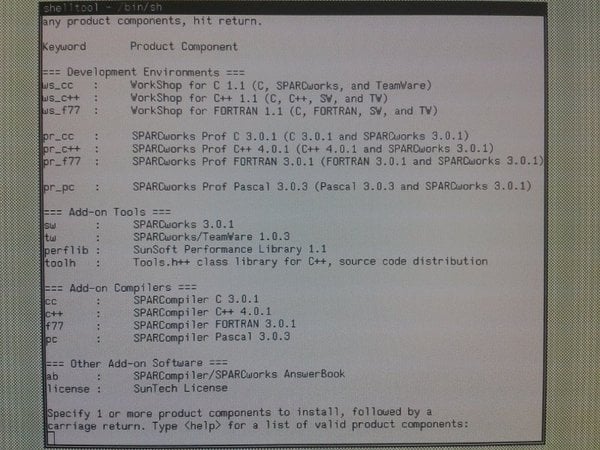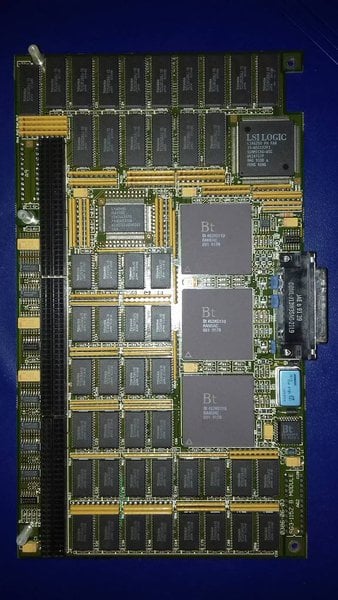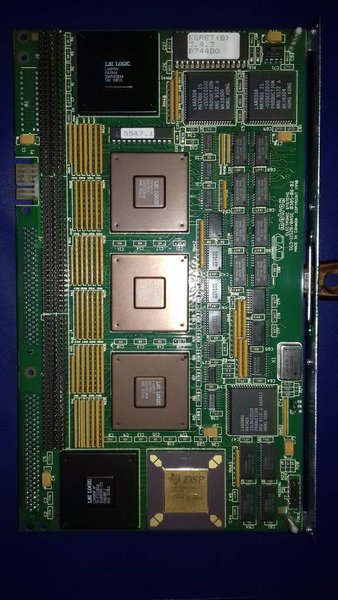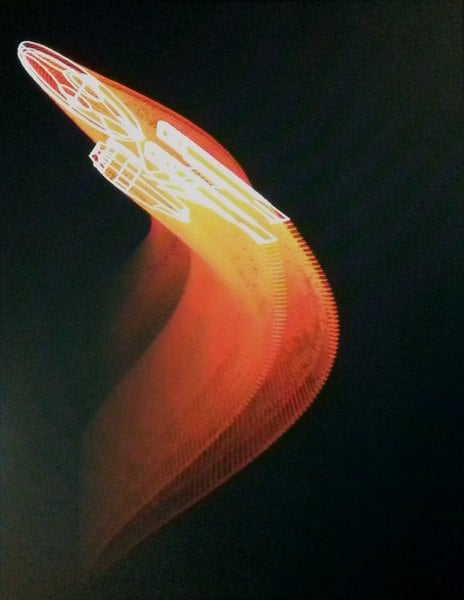Wow - that are the best pictures I've ever seen on this awesome piece of SUN vintage hardware!
I have a SPARCstation 2 by myself but never found these "graphics add-on".
On the Oracle website some infos from old docs.sun.com are still available:
* 800-5258-11 GT Graphics Subsystem Installation Manual
http://download.oracle.com/docs/cd/E19957-01/800-5258-11/preface.html
* 800-5264-11 Service Manual GT Graphics Subsystem
http://download.oracle.com/docs/cd/E19957-01/800-5264-11/preface.html
There are some information on Sun's GT (codename "Hawk") graphics subsystem by one of their developers:
http://www.michaelfrankdeering.com/Projects/HardWare/Hawk/Hawk.html
URL-Source: http://forums.nekochan.net/viewtopic.php?f=17&t=16723388
EDIT
Still some Sun Part numbers about the GT Graphics Options:
PART# DESCRIPTION
501-1624 Frame Buffer, DB13W3 and DB5W5, 76Hz
501-1692 Graphics Processor Front End (GPFE)
501-1693 SBus GT Adapter
340-2898 SBus Mounting Screw Adapter Bracket
501-1694 Frame Buffer to GPRP Connector
501-1726 Graphics Processor Rendering Pipeline (GPRP)
530-1684 SBus Adapter to GPFE Cable, 1.5M
GT Graphics Subsystem 3-Slot VMEbus Logic Enclosure parts breakdown:
PART# DESCRIPTION
330-1067 End Panel, 42 cm X 11 cm
330-1069 Front Bezel
240-1372 M4 0.7 x 10 mm Screw
330-1071 Side Panel, 42 cm X 59 cm
501-1127 3-Slot VMEbus Backplane, Pressfit
330-1144 Backplane Shield
340-1461 Backplane EMI Cover
370-1178 AC Switch, Fuse, and Filter Assembly
300-1093 325 Watt Power Supply, Summit Rev >=M required
540-2051 DC Fan Tray Assembly, 4 Fans
330-1089 Side Panel Screw Cover
340-1545 Air FIlter Assembly
340-2524 Foreplane EMI Cover
530-1684 SBus HSA to HGPFE Cable, 68-Pin to 68-Pin, 1.5M
800-5264 Service Manual for the GT Graphics Subsystem
Cheers, escimo
I have a SPARCstation 2 by myself but never found these "graphics add-on".
On the Oracle website some infos from old docs.sun.com are still available:
* 800-5258-11 GT Graphics Subsystem Installation Manual
http://download.oracle.com/docs/cd/E19957-01/800-5258-11/preface.html
* 800-5264-11 Service Manual GT Graphics Subsystem
http://download.oracle.com/docs/cd/E19957-01/800-5264-11/preface.html
There are some information on Sun's GT (codename "Hawk") graphics subsystem by one of their developers:
http://www.michaelfrankdeering.com/Projects/HardWare/Hawk/Hawk.html
URL-Source: http://forums.nekochan.net/viewtopic.php?f=17&t=16723388
EDIT
Still some Sun Part numbers about the GT Graphics Options:
PART# DESCRIPTION
501-1624 Frame Buffer, DB13W3 and DB5W5, 76Hz
501-1692 Graphics Processor Front End (GPFE)
501-1693 SBus GT Adapter
340-2898 SBus Mounting Screw Adapter Bracket
501-1694 Frame Buffer to GPRP Connector
501-1726 Graphics Processor Rendering Pipeline (GPRP)
530-1684 SBus Adapter to GPFE Cable, 1.5M
GT Graphics Subsystem 3-Slot VMEbus Logic Enclosure parts breakdown:
PART# DESCRIPTION
330-1067 End Panel, 42 cm X 11 cm
330-1069 Front Bezel
240-1372 M4 0.7 x 10 mm Screw
330-1071 Side Panel, 42 cm X 59 cm
501-1127 3-Slot VMEbus Backplane, Pressfit
330-1144 Backplane Shield
340-1461 Backplane EMI Cover
370-1178 AC Switch, Fuse, and Filter Assembly
300-1093 325 Watt Power Supply, Summit Rev >=M required
540-2051 DC Fan Tray Assembly, 4 Fans
330-1089 Side Panel Screw Cover
340-1545 Air FIlter Assembly
340-2524 Foreplane EMI Cover
530-1684 SBus HSA to HGPFE Cable, 68-Pin to 68-Pin, 1.5M
800-5264 Service Manual for the GT Graphics Subsystem
Cheers, escimo














